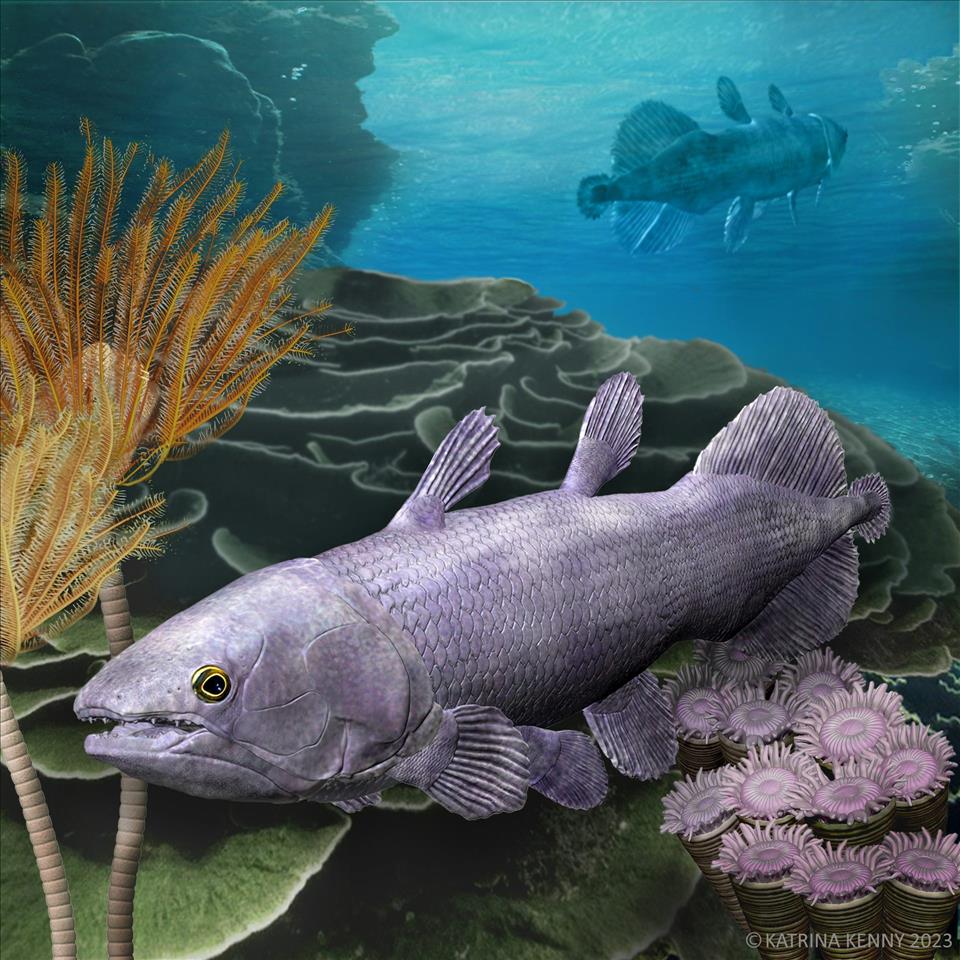
Exceptional New Fish Fossil Sparks Rethink Of How Earth's Geology Drives Evolution
In new research published in Nature Communications, we reveal the best-preserved coelacanth fossil ever found from the ancient period hundreds of millions of years ago when these ancient sea-dwellers first evolved. The fossil comes from the Gogo Formation on Gooniyandi Country in northern Western Australia.
We also studied the evolution of all the hundreds of coelacanth species we know from the fossil record to find out what drove the creation of new species across the aeons.
The answer came as a surprise: the greatest influence on coelacanth evolution was not ocean temperature or oxygen levels but tectonic activity. When the vast plates of Earth's crust were moving around more, new species were more likely to appear.
'Living fossils'Coelacanths are“lobe-finned” fish, which means they have robust bones in their fins a bit like the bones in our arms. Scientists believe they are more closely related to tetrapods (animals with backbones and four limbs, such as frogs, emus and humans) than to most other fishes.
Coelacanths have been around for a long time. The oldest known fossils are more than 410 million years old. But because these fossils are mostly fragments, we don't know a lot about what the earliest coelacanths were like.
A modern coelacanth in the sea off the coast of South Africa. Bruce Henderson / Wikimedia , CC BY
Later, during the age of dinosaurs which began around 250 million years ago, coelacanths became more diverse. In total, we have found traces of more than 175 fossil species from all over the globe.
Finally, at the end of the Cretaceous period, 66 million years ago, all signs of coelacanths mysteriously vanished from the fossil record. For a long time, scientists assumed the coelacanths were casualties of the massive asteroid impact that also signed the death warrant of the dinosaurs (along with around three-quarters of all life on Earth).
All that changed in 1938, when fisherpeople in South Africa pulled a large, enigmatic fish from the ocean depths that was like nothing they had seen before. A local museum employee with a keen interest in the natural sciences, Marjorie Courtenay-Latimer , immediately knew the fish was special.
Marjorie Courtenay-Latimer and the coelacanth she discovered in 1938. The South African Institute for Aquatic Biodiversity / Wikimedia
Courtenay-Latimer enlisted her friend J. L. B. Smith , a renowned South African chemist with an interest in ichthyology (the study of fish). Smith identified and named Latimeria, the first living coelacanth known to science.
Discovering this“Lazarus fish” was like stumbling across a live Triceratops dinosaur still roaming the forests of North America today. Even today, coelacanths are often described as“living fossils”.
A new fossil coelacanthThe new fossil coelacanth, Ngamugawi wirngarri. John Long
Our team from Flinders University, together with other colleagues from Australia, Canada and Europe, discovered a new species of fossil coelacanth on Gooniyandi Country in northern WA. Around 380 million years ago, the site was a tropical reef teeming with more than 50 species of fish.
The Gogo fossil sites as viewed from the air. John Long
Ngamugawi wirngarri, the new fossil coelacanth, is the first fish found in the area to bear a name given to us from the Gooniyandi language. The name means“ancient fish in honour of Wirngarri”, a respected elder of the community.
Ngamugawi is the best three-dimensionally preserved coelacanth from the Devonian Period (359 million to 419 million years ago). This fossil provides a great insight into the early anatomy of this lineage.
A digital 3D reconstruction of the skull of Ngamugawi wirngarri, a new Devonian coelacanth from the Gogo Formation. Reconstruction by Alice Clement. Plate tectonics drive coelacanth evolution
Our study of the new species led us to analyse the evolutionary history of all known coelacanths. In doing so, we calculated the rates of evolution across their 410 million year history.
We found that coelacanths have generally evolved slowly, with a few intriguing exceptions.
Furthermore, we analysed a series of environmental factors that we considered potential candidates for influencing coelacanth evolutionary rates. These included tectonic plate activity, ocean temperatures, water oxygen levels, and atmospheric carbon dioxide levels.
Of all the variables we looked at, the one with the greatest influence on the rate of coelacanth evolution was tectonic plate activity. New species of coelacanth were more likely to evolve during periods of heightened tectonic activity, as seismic movement transformed habitats.
Are coelacanths still evolving?Along with our analysis of all fossil coelacanths, we also had a close look at the two living species, Latimeria chalumnae and Latimeria menadoensis.
At first glance, these fish look almost identical to some of their counterparts from hundreds of millions of years ago. However, on closer analysis we could see they were in fact distinct from their extinct relatives.
While Latimeria has essentially ceased evolving new features, the proportions of its body and the details of its DNA are still changing a little. So perhaps it's not a“living fossil” after all.
One of the authors (Alice Clement) very excited to come face-to-face with a coelacanth specimen at the South African Institute for Aquatic Biodiversity (SAIAB) in Makhanda, South Africa. Alice Clement

Legal Disclaimer:
MENAFN provides the
information “as is” without warranty of any kind. We do not accept
any responsibility or liability for the accuracy, content, images,
videos, licenses, completeness, legality, or reliability of the information
contained in this article. If you have any complaints or copyright
issues related to this article, kindly contact the provider above.














Comments
No comment